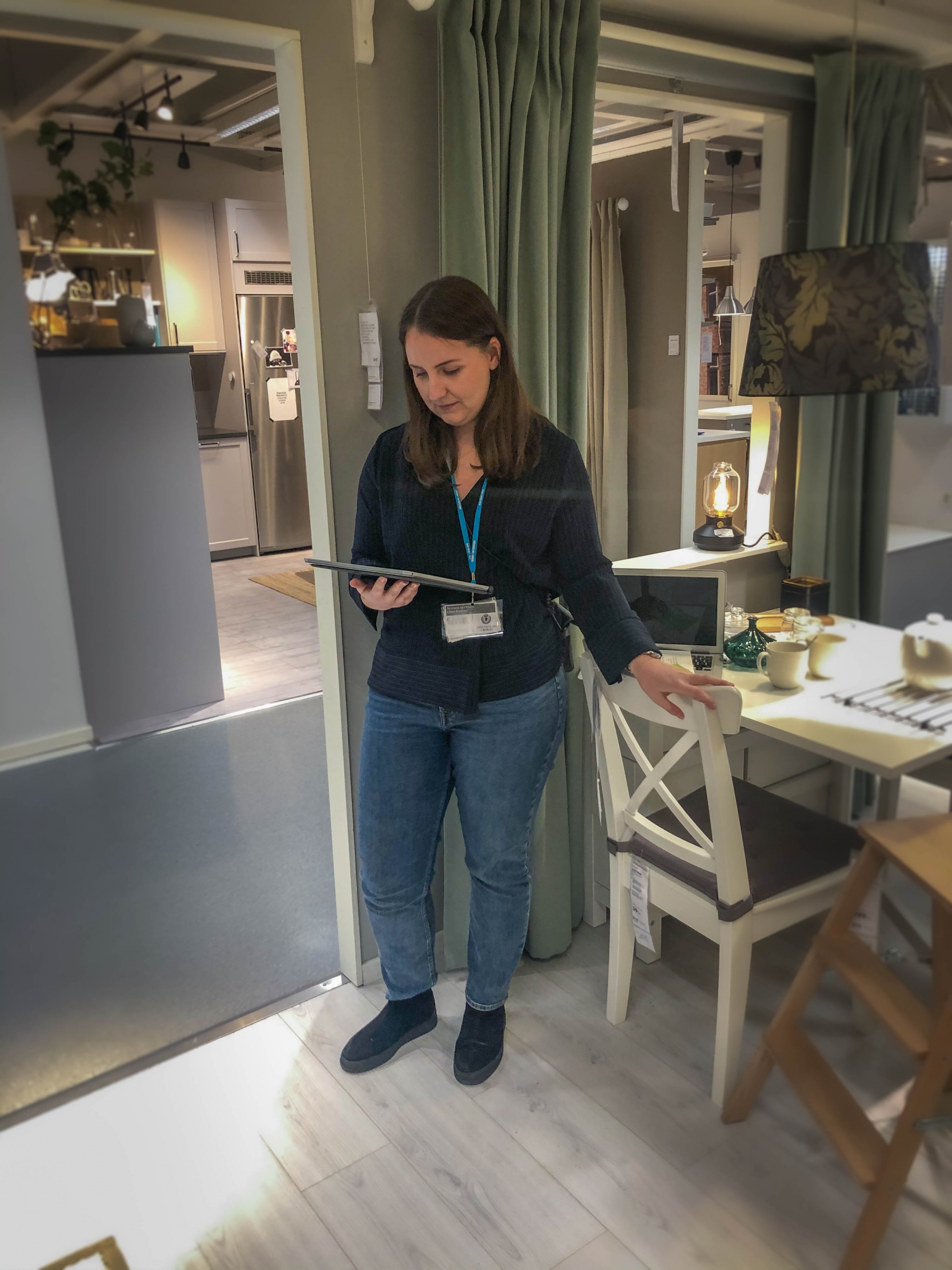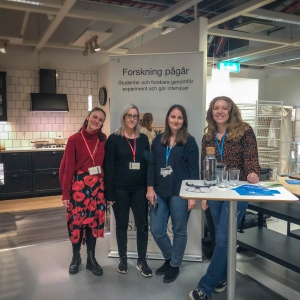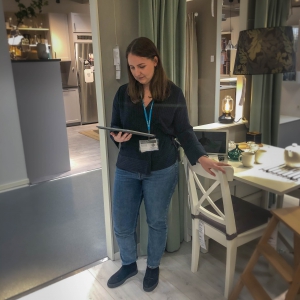In the spring of 2020, Emma Randau and Frida Tordsson conducted a study at IKEA, where, with the help of eye tracking, one could observe customers’ behaviour when preparing a complex purchase. The eyetracking tests were performed at IKEA’s kitchen department, in parallel with an additional group of students.
Summary of the study
Consumer behavior has changed and today customers do not search for product-related information only in the physical store before they have to make a complex purchase. Technical development and online stores have made it possible for consumers to search for information wherever and whenever they want. This has led to consumers being more informed than ever. This change in consumer behaviour is important to study because companies need to understand their consumers in order to create sustainable business models and strategies. Therefore, our study aims to create a greater understanding of this changed consumer behaviour and whether it has affected the role of the physical store when the consumer prepares for a complex purchase.
The purpose has been fulfilled by conducting a case study of IKEA’s kitchen department by using observations, a survey and interviews. By using eye tracking technology during the observation, we were able to study the respondents’ behaviour in more detail than previous research has done. This is because our intention is to understand important aspects of how the consumer prepares and behaves before and during the visit to the physical store. We used a mixed method to be able to understand if the role of the physical store has changed when consumers prepare for a complex purchase.
The study concludes that the physical store still has an important role when the consumer prepares for a complex purchase. Mainly by the store providing consumers with the opportunity to feel the product, and to give them an overall impression of what they are going to buy. Therefore, the role of the physical store in the face of a complex purchase is to complement the information available online by enabling the consumer to interact with the products in a real store environment.
Authors’ experiences of the test study
The benefits of eye tracking
The benefit of using eye tracking was that we much more accurately than previous research we could see what they noticed, looked at and there with how they behaved. It also made our study unique as there are few studies conducted that examine just this with eye tracking.
Eye tracking is a good way to be able to investigate fixed environments that do not move but can be kept unchanged throughout the test period. An example of this could be which packaging is perceived as most attractive on a store shelf. It was also fun to learn how eyetracking worked and it gives a lot of attention to have worked with such technology in his essay.
Respondents
We experienced eye tracking as very exciting and there were many who wanted to stand up and be part of the study because they thought it seemed exciting. However, there were also many who did not want to stand up because they thought it was scary and that they looked strange when they used it.
- From left to right: Julia Gustafsson, Anna Atterfors, Emma Randau, and Frida Tordsson


